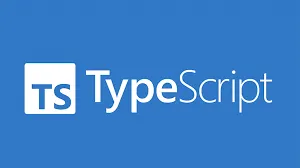1. 개요
이번 포스팅에서는 TypeScript를 사용하여 React 또는 React Native에서 Props를 정의하는 방법에 대해 알아보겠습니다. interface와 type을 활용해 컴포넌트의 props 타입을 선언하고, 각 방식의 차이점을 비교해 보겠습니다.
2. Props 정의하기
2-1. interface
TypeScript에서 React 컴포넌트의 props를 정의할 때, 주로 interface를 사용합니다. interface는 컴포넌트가 받아야 하는 props의 구조를 명확하게 정의하고, 컴파일 타임에 타입 검사를 수행할 수 있게 해줍니다.
interface CustomButtonProps {
label: string;
variant?: "filled" | "outlined";
size?: "medium" | "large";
}
TypeScript
복사
•
?는 해당 속성이 선택적임을 나타냅니다.
•
CustomButtonProps 인터페이스는 label 속성을 필수로 받고, variant와 size는 선택적 속성으로 정의합니다.
2-2. type
interface 대신 type을 사용하여 props를 정의할 수도 있습니다. type은 더 유연하게 타입을 선언할 수 있으며, 다양한 데이터 타입을 정의하는 데 유용합니다.
type CustomButtonProps = {
label: string;
variant?: "filled" | "outlined";
size?: "medium" | "large";
};
TypeScript
복사
2-3. interface와 type의 차이점
interface
•
주로 객체의 구조를 정의하는 데 사용되며, 다른 interface와 확장이 용이합니다.
•
확장성과 선언 병합이 가능해, 큰 프로젝트에서 주로 사용됩니다.
interface BaseButtonProps {
label: string;
}
interface CustomButtonProps extends BaseButtonProps {
variant?: "filled" | "outlined";
size?: "medium" | "large";
}
TypeScript
복사
type
•
유연성이 높아, 기본 타입 (예: 유니온 타입, 튜플 등)을 정의할 때 자주 사용됩니다.
•
객체 타입 외에도 다양한 형태의 타입을 정의할 수 있습니다.
type ButtonVariant = "filled" | "outlined";
type ButtonSize = "medium" | "large";
type CustomButtonProps = {
label: string;
variant?: ButtonVariant;
size?: ButtonSize;
};
TypeScript
복사
3.예제로 알아보기
첫 번째 예제로 CustomButtonProps 인터페이스를 사용해 컴포넌트의 props 타입을 선언한 후, props의 값을 기본값으로 설정합니다.
interface CustomButtonProps {
label: string;
variant?: "filled" | "outlined";
size?: "medium" | "large";
}
function CustomButton({
label,
variant = 'filled',
size = 'large',
}: CustomButtonProps) {
// CustomButton 컴포넌트 구현
}
TypeScript
복사
위 코드에서, variant와 size에 기본값을 할당하여, props가 전달되지 않더라도 **기본 동작을 보장합니다.
다음 예제입니다. React Navigation에서는 네비게이션과 라우팅 관련 props를 정의할 때 유틸리티 타입을 자주 사용합니다. 예를 들어, StackScreenProps를 사용하여 스택 네비게이터에서 화면의 props를 정의할 수 있습니다.
type AuthHomeScreenProps = StackScreenProps<
AuthStackParamList,
typeof authNavigation.AUTH_HOME
>;
TypeScript
복사
•
StackScreenProps: React Navigation에서 제공하는 유틸리티 타입으로, 스택 네비게이터에서 각 화면이 navigation과 route라는 두 가지 주요 속성을 가지도록 강제합니다.
•
navigation: 화면 간의 이동과 관련된 작업을 수행하는 객체.
•
route: 현재 화면에 전달된 파라미터에 접근할 수 있는 객체.
const authNavigation = {
AUTH_HOME: 'AUTH_HOME',
AUTH_LOGIN: 'AUTH_LOGIN',
AUTH_REGISTER: 'AUTH_REGISTER',
} as const;
type AuthStackParamList = {
AUTH_HOME: undefined;
AUTH_LOGIN: { redirectUrl?: string };
AUTH_REGISTER: { referrerId?: string };
};
TypeScript
복사
위 코드에서 AuthStackParamList는 각 화면의 경로와 파라미터를 정의합니다. AuthHomeScreenProps는 이 정보를 기반으로 특정 화면에 전달되는 props 타입을 설정합니다.

